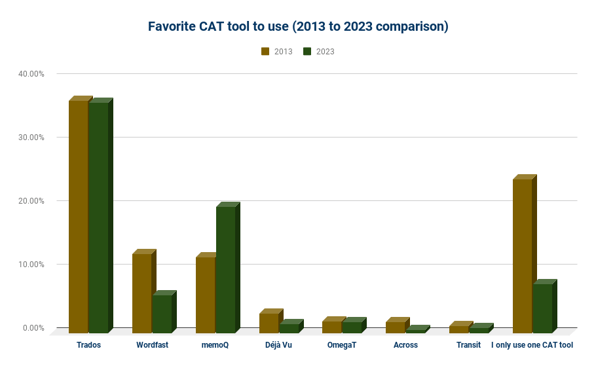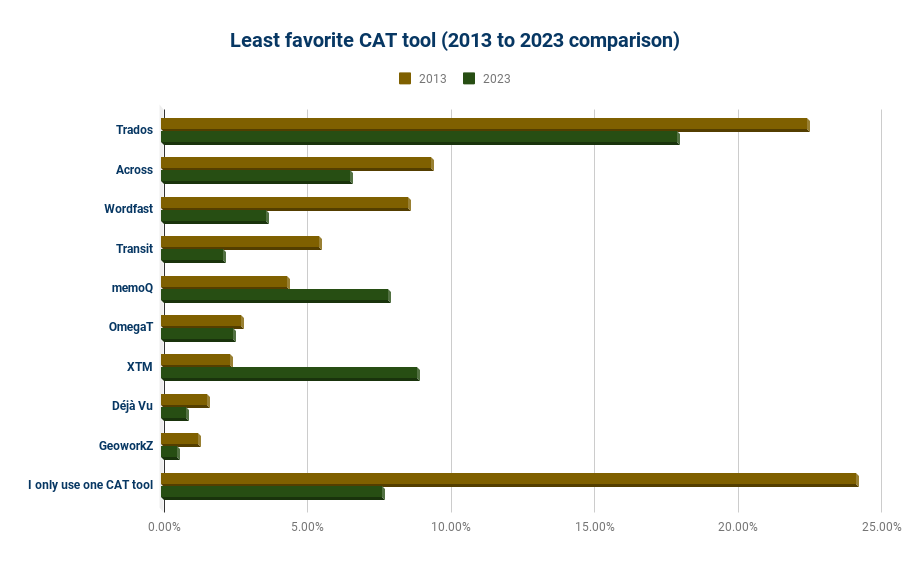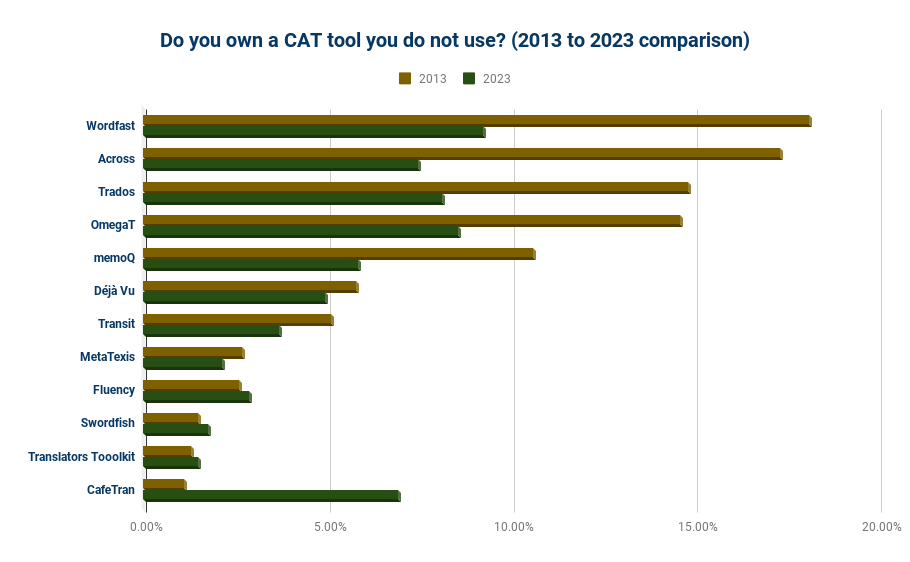Ten years on... comparisons with the 2013 report
The big players in CAT tools in 2013 are still with us in 2023, but in some cases you will see that popularity and use have changed. MemoQ has moved from third into second position as the most reported CAT tool, for example. Tools such as XTM, MetaTexis, and Wordbee made interesting jumps in the percentages of translators reporting using them. And Memsource, which was relatively very new to the game in 2013, has moved up most notably since then, going on to occupy third place as the most widely-reported CAT tool.
Another interesting change has been the percentage of translators using just one CAT tool. Now more than ever, translators find themselves using more than one CAT tool as they move from job to job or client to client…
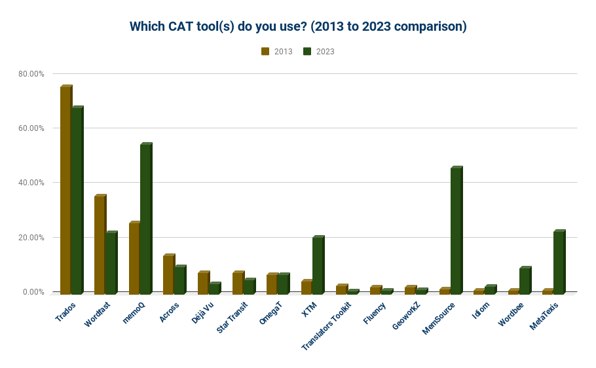

Top tools in 2023
Below, you will see a breakdown of the most-used CAT tools as of 2023, as reported by translators. Bear in mind that, as we just mentioned, many translators are using more than one CAT tool, and for this breakdown, we are looking at simply how widely their use was reported among translators.
.png?width=596&height=697&name=Most%20used%20CAT%20tools%20(1).png)
Translators were also asked to declare which tool they use the most, if they are using
more than one. The top three remain the same here, though, with Trados, memoQ, and
Memsource coming in first, second, and third respectively (Trados, Wordfast, and
memoQ were the top three in the previous report).
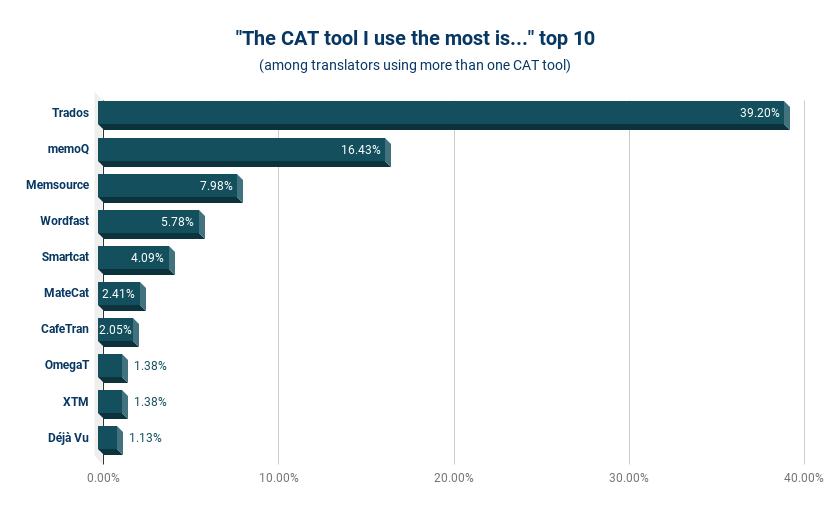
One CAT to rule them all?
From the standpoint of the user, it would be nice to have one CAT tool which is supremely easy to use, supremely compatible with all file types, translators’ needs, and client needs/expectations, and which the translator could feel free to use for all the work where they are using a CAT tool.
This does not seem to have happened yet, and we may be further from it happening than 10 years ago. Prior to 2013, it was already common for translators to use more than one CAT tool, for a variety of reasons-- in response to client preference or
requirements, for example. The 76% of translators who were using more than one CAT tool in 2013 has grown to just over 92% in 2023.
Sometimes this means the translator is investing more money in CAT tools in order to be able to cover the jobs they want to, though not always-- in some cases, for example, the client provides access to the tool as part of the deal. It does mean that the translator is investing more time in becoming familiar and then proficient in more than one CAT tool, though, and this affects the bottom line when it comes to overall productivity.
Up next: Tell a friend...
This post comes from CAT tools 2023: an industry report. ProZ.com industry reports can be found at https://www.proz.com/industry-report/ . ProZ.com paying members receive immediate, full access to the information available in industry reports, which are about and for freelance language professionals.


